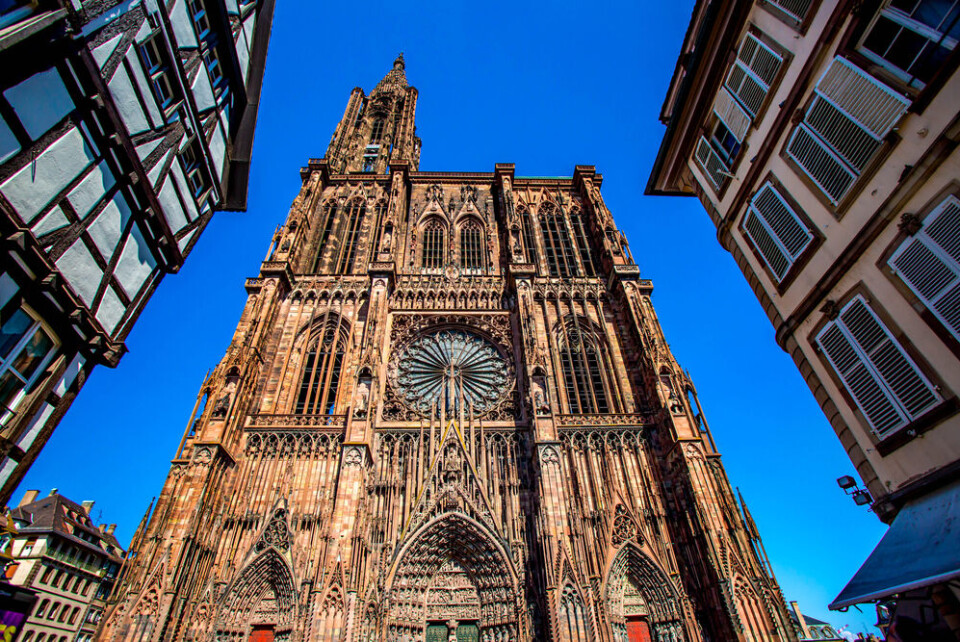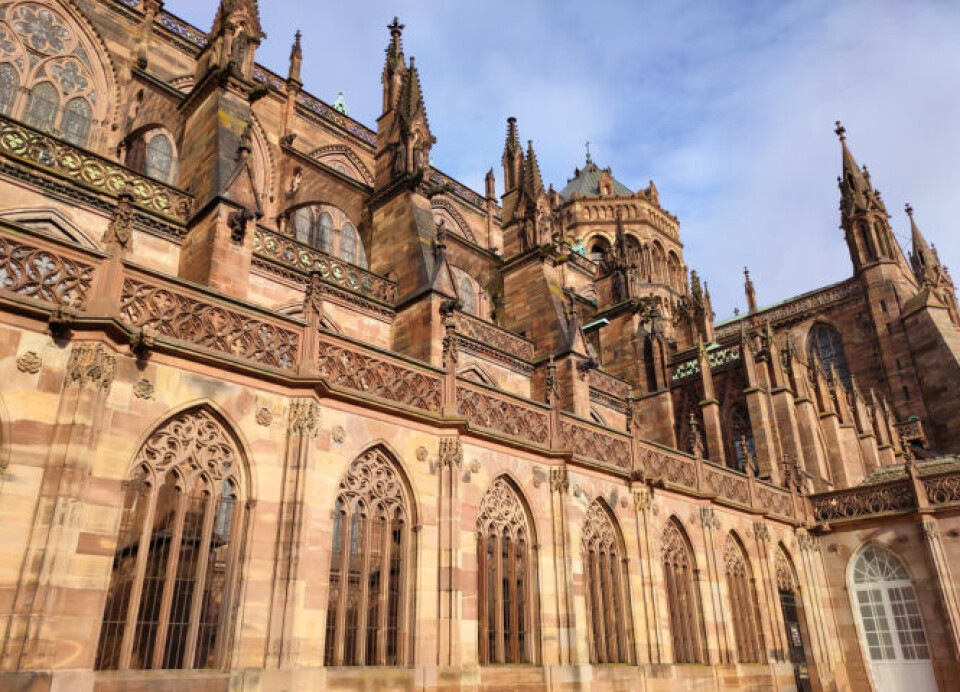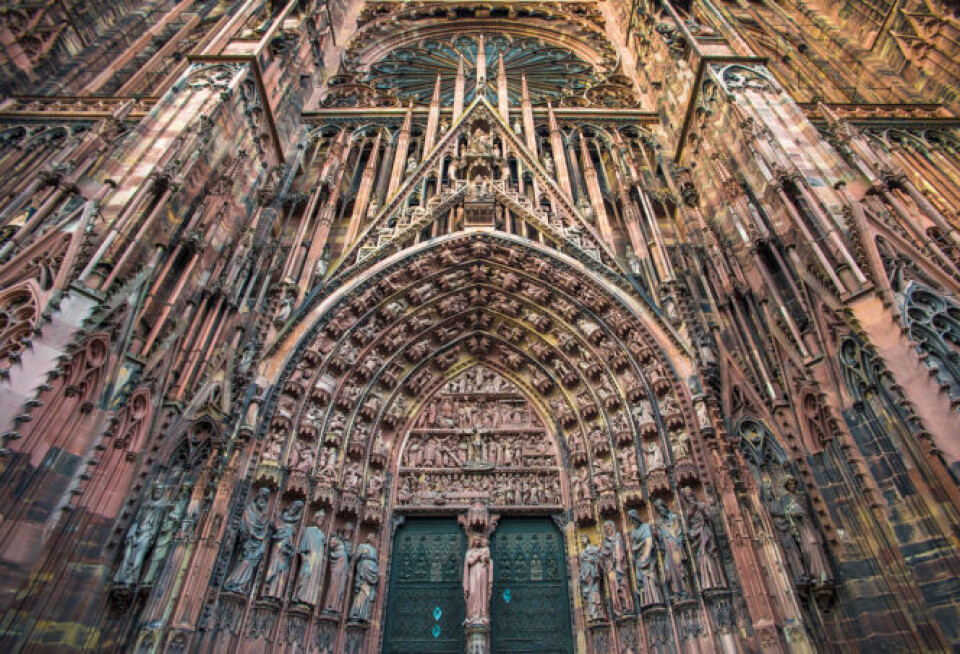-
Owners of French mill seek help tracing history
'We are looking for old photographs from before it closed,' say couple who restored the building
-
La Baule is a classic French case study in the evolution of the grand resort
The coastal town renowned for its Belle Epoque villas, Art Deco elegance, and modernist designs, attracts tourists and remote workers alike
-
One of the most notorious meals in the history of French gastronomy
How hard times inspired an outrageous festive feast in 1870
Why Strasbourg’s cathedral is one of France’s greatest treasures
In her series on the cultural heritage of France, art historian Julia Faiers reveals the narrative power of the medieval Notre-Dame de Strasbourg

Strasbourg’s Notre-Dame cathedral can proudly claim to be one of France’s greatest cultural treasures. The Unesco World Heritage site’s star attraction displays its history, and that of its medieval worshippers’ beliefs, in the dizzying array of figurative sculpture that decorates its surfaces, inside and out.
The facades and walls literally teem with figures large and small, in niches, on columns and in the tympana* above the portals. There are Wise and Foolish Virgins*, Virtues, monks, emperors and popes. The statues and carvings, spanning styles and centuries, present to the viewer a narrative universe in stone.
The twenty-first century visitor cannot fail to be impressed by the architectural achievements of the cathedral’s medieval masons. At 142.11 metres, the openwork spire on the north tower was the tallest man-made structure in the world at the time of its completion in 1439.
Visible from miles around, the landmark continues to dominate the Alsace landscape.
Access to the cathedral’s main entrance is from the narrow confines of the rue Mercière. Both now and in the Middle Ages, when approaching the cathedral’s west facade, worshippers and visitors were afforded only a piecemeal view of this magnificent building. The edifice’s soaring dimensions were – and still are – obstructed by an intricate web of surrounding streets and houses.
But get close up, and suddenly a series of carved pink sandstone statues provides an access-all-areas pass to the medieval imagination. It was no accident that the cathedral’s sculptors positioned their stone figures where they could be seen intimately and even touched. By focusing the visitor’s attention on the sculpture bedecking the church’s portals, jambs* and pillars, they were offering believers a fast-track physical and spiritual pathway to God.

Details on the cathedral’s facade. Pic: Solarisys / Shutterstock
So who was responsible for creating these stories in stone, and how did they transform the appearance of the existing building? In 1015 work began on a cathedral to replace an earlier church. Much of this Romanesque structure was destroyed in a series of fires throughout the twelfth century, and so reconstruction began again in 1190.
Around 1225 a group of masons who had already earned admiration for their sculpting skills at Chartres Cathedral arrived in Strasbourg. It is this dream team we have to thank for the statues in the south transept portal and for the Pillar of Angels.
The Chartres sculptors modernised the Romanesque double portal of the south transept with fifteen figures and two sculpted tympana. Twelve of these statues were destroyed during the revolutionary era, but the principal figures of Solomon in the central jamb, Ecclesia on the outer left jamb, and Synagoga on the outer right jamb, survive in situ (albeit as replicas – the originals are now in the Musée de l’Oeuvre Notre-Dame).
Ecclesia is a personification of the triumphant Church, who looks towards the bust of Christ, just above Solomon, while Synagoga represents the vanquished Synagogue. She is blindfolded and her lance is broken. When beholding this sculptural statement of theological propaganda, in which Christianity triumphs over Judaism, the medieval worshipper was reassured that they had backed the winning team.
Stepping through the portal into the transept, the contemporary visitor is struck by the depth of space, lit and coloured by stained-glass windows, and the monumental sculpted Pillar of Angels that supports the ribbed vault above. But this is no mere structural prop.
The surface of the pillar almost vibrates with the life of the sculptures of saints and angels that adorn it.
Just above human height, in between the responds* that soar uninterrupted from floor to vault, statues of the four Evangelists* greet the viewer, gesturing to the heavenly figures above them: two angels with outstretched wings holding trumpets that medieval viewers would have interpreted as the instruments used to announce Christ’s Second Coming. Above them stands another pair of angels holding Jesus’s Crown of Thorns. Like the sculpture on the exterior of the cathedral, the Pillar of Angels figures reassured the medieval worshipper that the Church was the key to their personal salvation.

West facade and portal of the cathedral. Pic: javarman / Shutterstock
Look up to the tribune gallery above the chapel of Saint Andrew and we are reminded how behind every example of medieval sculptural wizardry was a flesh-and-blood mason carving and chiseling his lifelike statues. Leaning casually on the balustrade of the gallery, a stone figure casts his eyes over to the Pillar of Angels.
This self-portrait of the sculptor Hans Hammer, who renovated the tribune and created the virtuoso pulpit in the late fifteenth century, gazes almost wistfully at the masterful work of the masons who preceded him by two hundred years.
The portrait, invisible from the ground to all but the most eagle-eyed, serves as a constant, subtle reminder of the skill of Strasbourg’s medieval masons to bring stories to life through the unyielding medium of stone.
Glossary
Tympana – plural of tympanum, the area immediately above a church doorway
The Wise and Foolish Virgins – a parable from the Gospel of St. Matthew, describing ten virgins who accompany a bride to the house of her groom. Only five of them bring oil for their lamps. The forgetful five go off to buy oil, but are denied entry to the house when they arrive. The medieval Christian interpreted this as a cautionary tale, and that they should be in a perpetual state of preparedness for Christ’s Second Coming.
Jamb – vertical side elements of a doorway, often containing sculpture in Gothic churches.
Respond – a column attached to a supporting pier.
Evangelists – the saints Matthew, Mark, Luke and John.
Related articles
1,000 years of travel: Meandering history of France’s Bayeux Tapestry
Beaulieu-sur-Dordogne: Why pilgrims flock to this French beauty spot
Experts approve controversial changes for Notre-Dame cathedral
























